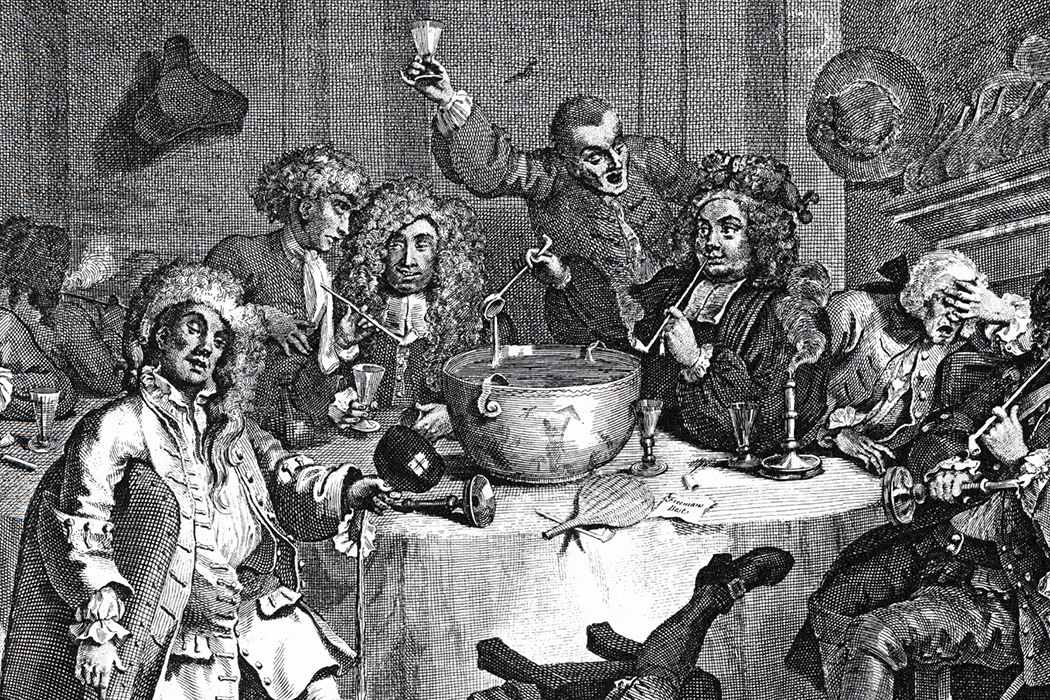In Charles Dickens’s day, the arrival of cold weather in England or America meant it was time for punch—an elaborate alcoholic concoction guaranteed to warm up any party. But not just anyone drank the warm, boozy beverage: As Karen Harvey writes, a cup of punch contained plenty of anxiety about women’s refinement and men’s barbaric behavior.
Those gender stereotypes were reinforced and explored during the eighteenth century, when both tea and punch enjoyed huge popularity. Tea—enjoyed at home by women—gained a reputation of polite gentility. Punch had the opposite connotation—its convivial, communal consumption was the province of men.
Unlike tea, punch was usually served outside the home at inns or special “punch houses.” But while tea was decorously poured into individual vessels—at first, shallow bowls instead of cups with saucers—punch could be savored in distinct vessels or passed around and shared. Punch parties were as raucous as tea parties were polite, and both kinds of ritual quickly acquired their own pageantry and gendered reputation. (Though some women did drink punch, literature more frequently references male punch drinkers).
Tea was associated with women’s refined domesticity, while punch became shorthand for barbarity and boorishness. And since tea was consumed in fine china purchased by women, it became a kind of stand-in for contemporary worries about consumption and domesticity. Men made fun of women willing to trade their own clothing for genteel china—a growing must-have for any “refined” hostess.
While these conversations raged, men were experiencing a historic breach from their own homes. In the mid eighteenth century, men started leaving home to socialize or doing so in specific male spaces while women consumed tea in same-sex settings. Harvey sees that transition expressed in the material culture that grew up around punch drinking.
There was a punch-related object that subverted that trope, though: the punch pot. This item, popular for a brief moment in the late eighteenth century, looked almost exactly like a teapot, but was intended for serving punch instead. Harvey sees it as a way of domesticating men’s punch consumption by making it impossible to drink directly from the pot or to dip one’s cup into the pot.
Weekly Digest
With the help of the punch pot, writes Harvey, “Gone were those murky associations of drunkenness, impoliteness and the dereliction of economic duties.” Ultimately, tea—once confined to women’s spaces—crossed over to male spaces too via the pot it inspired, calming down the barbarity of punch drinking by literally containing it in a pot. And by making it okay for men to drink punch in the home, the punch pot brought punch full circle, uniting domesticity and barbarity for a brief moment before “separate spheres” forced men’s and women’s social customs even further apart.
Thirsty for a cup of the barbarous, now obsolete drink? Click here for some of Dickens’ favorite recipes for punch.







